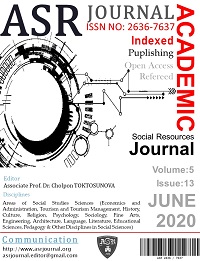Author :
Abstract
İnsanlığın varoluşundan beri süre gelen arıcılık faaliyeti günlük gıda ihtiyaçların karşılandığı zirai bir faaliyet olarak ortaya çıkmıştır. Zaman içerisinde arıların sağladığı birçok ürün ekonomik anlamda da değer kazanmaya başlamıştır. Günümüzde ise arıcılık beslenme aracı olmakla birlikte, işsizliğin çözümünde ve bitkilerin verimliliğinde önemli bir ekonomik faaliyet olarak karşımıza çıkmaktadır. Arıcılığın ekonomik unsurları girdi ve çıktı fiyatları arasındaki fark ile ölçülmektedir. Arıcılık faaliyetinin sürekliliği bu unsurlar arasındaki farkın her zaman pozitif olmasıyla mümkündür. Bu çalışma’da arıcılık faaliyetine 30 koloni ile başlayan bir üreticinin 5 yıllık süre içinde elde edeceği kazanç ve katlanacağı maliyetler ile 30 koloni ile başlayıp her yıl 10 koloni artıran üreticinin 5 yılsonunda elde edeceği kar/zarar tespit edilmeye çalışılmıştır. Çalışmada kovan sayısının aynı kaldığı, bal fiyatlarının %5 ve malzeme fiyatlarının her sene %10 oranında arttığı ve her yıl amortisman olarak 300 TL ayrıldığı ve yıllık bal veririmin ortalama 13,31 olduğu kabul edilmektedir. Tüm bu veriler ışığında 30 koloni ile arıcılık faaliyetine başlayan ve ürettiği bal miktarını arttırmayan bir işletme 5 yılın sonunda 11.978,60 TL toplam kar elde edebilmektedir. İşletme sahibi koloni sayısını her yıl 10 kovan artırdığı varsayımı altında, 5 yılın sonunda 4392,3 kg bal üretebilmekte ve kâr toplamı da 51.705,34TL’ye ulaşabilmektedir. Elde edilen bu bulgular ekseninde koloni sahiplerinin maliyeti minimize ve karı maksimize edebilmeleri için öncelikle koloni sayılarını artırmaları, daha sonra uzun vadede sabit yatırım giderlerini düşürmeleri, genç ve sağlıklı kolonilerle çalışılarak koloni başına bal verimini artırmaları, nektar akım dönemlerini değerlendirmeleri ve arıcılık ürünlerini çeşitlendirmeleri gerekmektedir.
Keywords
Abstract
Beekeeping activity, which has been going on since the existence of humanity, has emerged as an agricultural activity where daily food needs are met. Over time, many products provided by bees have started to increase in value in terms of economic aspects. Today, beekeeping is a mean of nutrition, on the other hand, it is also an important economic activity for the solution of unemployment and productivity of plants. The economic elements of beekeeping are measured by the difference between input and output prices. The continuity of the beekeeping activity is possible as long as the difference between these elements is always positive. In this study, it was aimed to determine the profit and loss of a producer, whose beekeeping activity started with 30 colonies, for 5 years, and the profit and loss of a producer who started with 30 colonies and increased 10 colonies every year, at the end of 5 years. In the study, it was assumed that the number of hives remained the same, the honey prices increased by 5% and the material prices increased by 10% each year, and 300 TL was kept as amortization annually, and the annual yield of honey was 13.31 on average. In the light of all these data, an enterprise that started beekeeping with 30 colonies and did not increase the amount of honey it produces can make a total profit of 11.978,60 TL at the end of 5 years. Assuming that the number of colonies increases 10 hives each year, the enterprise can produce 4392,3 kg of honey and the total profit can reach 51.705,34 TL at the end of 5 years. According to these findings, colony owners should, to minimize cost and maximize profit, firstly increase the number of colonies, then decrease their constant investment expenses in the long run, increase the yield of honey per colony working with young and healthy colonies, benefit from nectar flow periods and diversify their beekeeping products.





